
Stobi is the largest archeological site in Macedonia. It is located near the village Gradsko, on the highway from Veles to the south. Stobi was built at the crossing of two important old Roman roads: the Axios Way along the river Vardar connected Stobi with Skupi (nowadays Skopje) and the Diagonal Way connected Stobi with Heraclea Lyncestis (nowadays Bitola).The site has likely been inhabited since before the 4th century BC.

The Roman ruins date from the 2nd-6th century AD. In the 6th century the city was abandoned after a series of earthquakes. When we were in Stobi in the spring of 2008, an extra surprise were the seas of flowers which added extra beauty to the site. In total, we spend about two hours at the site. The site is big and there is no shadow, so go well prepared: take sun cream and water!
Map of Stobi

This map is from the book “Loca Sanctorum Macedoniae, the cult of martyrs in Macedonia from the 4th to the 9th centuries” (1997) by Blaga Aleksova, the former director of the Archeological Museum in Skopje. I bought this book at the shop next to the restaurant at Stobi. It was 1000 Denar, about 16 euros. The numbering of the chapters below corresponds with the numbering of the map.
2-North Basilica & Baptistery
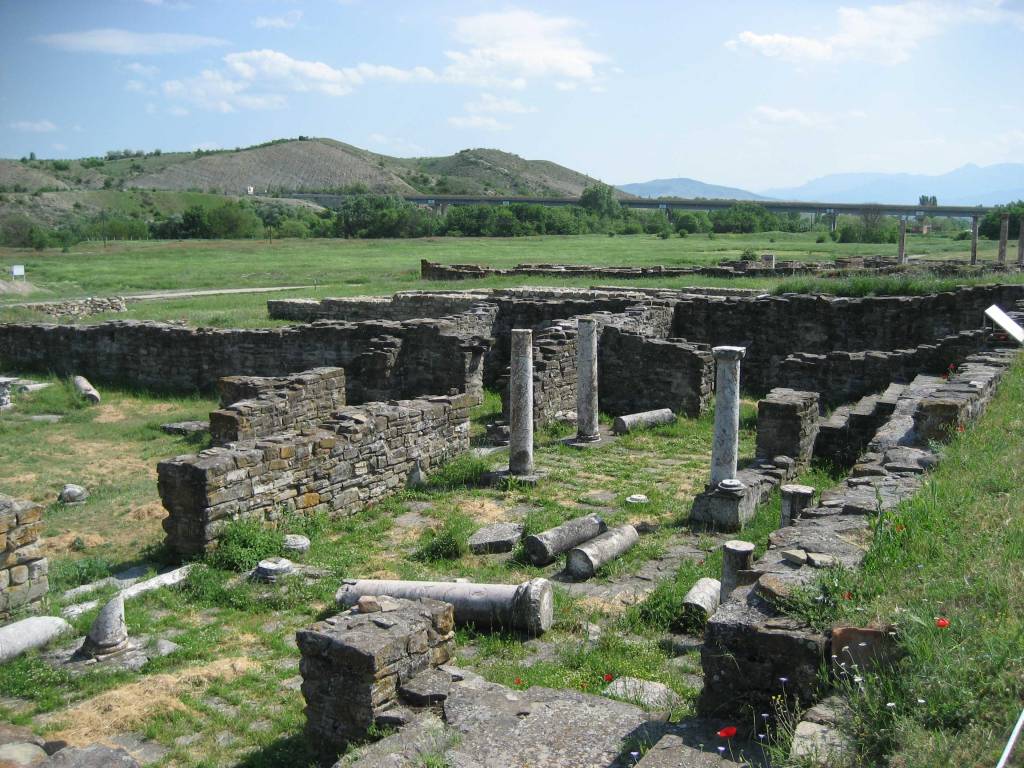
The North Basilica is the first structure on the northern site, hence the name North Basilica. The church was discovered in 1937. The erection of the columns of the atrium and the conservation of the niches were done after the excavations, and again after World War II. The church lies below the level of the street (Via Principalis Inferior). The North Basilica was erected over a Late Antique Palace and had several construction phases. This Roman Palace was renovated by the end of the 4th or beginning of the 5th century (AD) and adjusted for the service as a church of the basilica type.

It has a baptistery on the north side which was added later to the North Basilica. An entrance was opened in the northern nave for communication with the baptistery. Enriched with this baptistery, the building was used for a while as the Episcopal Basilica of Stobi during the building of the Basilica of Bishop Philip (the later Episcopal Basilica). After the building of the Episcopal Basilica with its highly decorated baptistery, the function of the baptistery in the North Basilica was terminated.
4-Civil Basilica

The Civil Basilica is located directly south of the North Basilica and was discovered in 1937. Between the North Basilica and the Civil Basilica the Little Bath can be found. It has a pool and a double room.
6-Central Basilica and Synagogue

The Central Basilica and Synagogue is located south of the Civil Basilica at the Via Principalis Inferior. The Central Basilica is a Christian building that was built in the late 4th or early 5th century AD on the remnants of an older Jewish temple (synagogue) that dates back to the 4th century. The floor of the synagogue was discovered 1.5 meters under the level of the Central Basilica. In turn, this synagogue was built on an older synagogue from the 3rd century.
7-House of Psalms

By the end of the 4th century AD the House of Psalms or Palace of Polycharmos belonged to Polycharmos, the founder of the synagogues that are located north of the building. The building is located at the Via Principalis Inferior street.

Later, the Central Basilica was build on the remnants of these synagogues. Subsequently, the Palace of Polycharmos became the residence of the church authorities. Some huge vessels were standing at this location as well.
8-Central Fountain

The Central Fountain or City Fountain is located on a small square created by the streets Via Axia and Via Principalis Inferior.
9-Large Bath
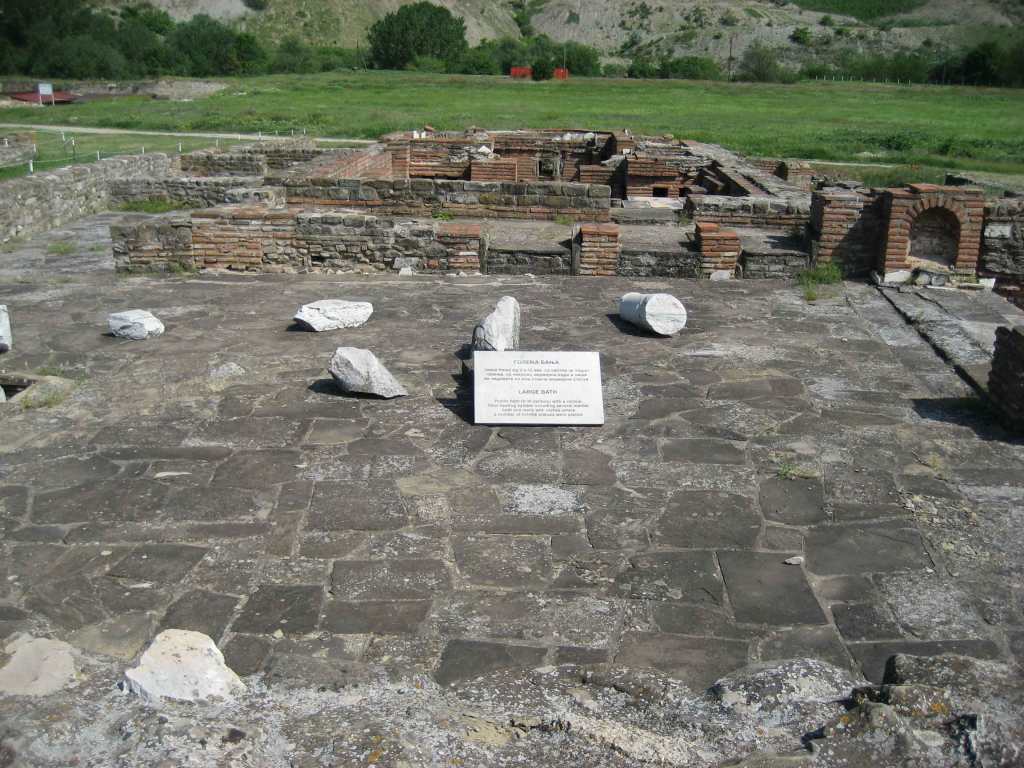
The Magnae Thermae or Large Bath was discovered in 1931. It dates from the 5th-6th century AD and had a central floor heating system including several marble baths and walls with niches where a number of marble statues were placed. The reconstructed bath was in use until the late 6th century.
11-House of Peristerias
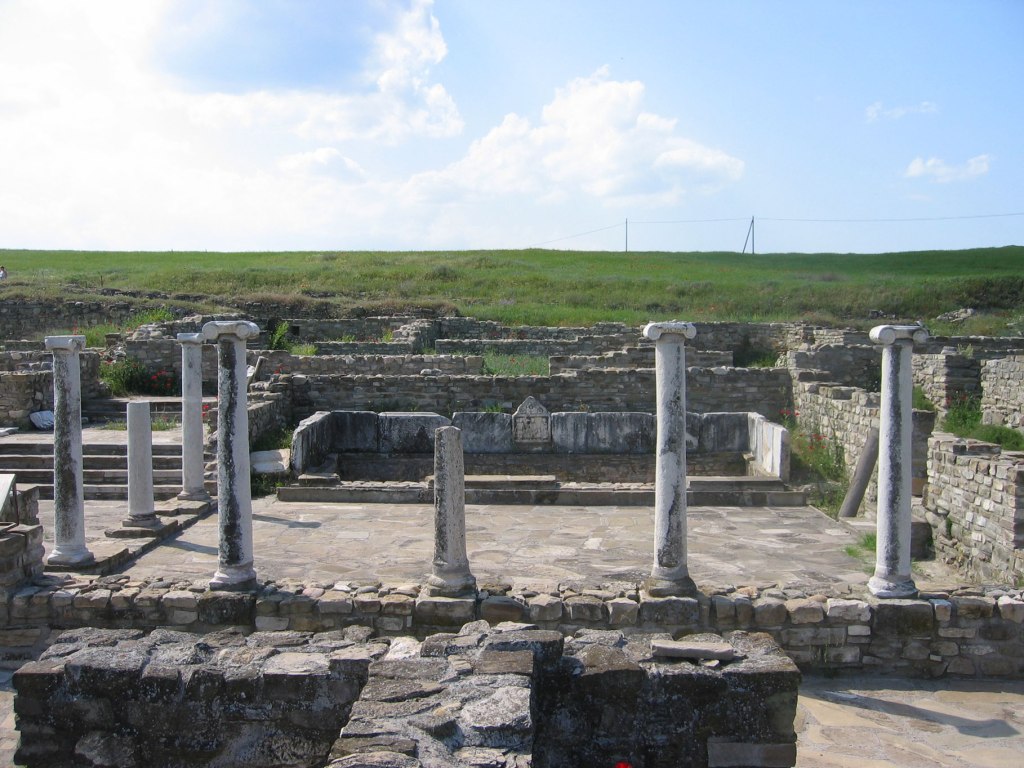
The House of Peristerias is a complex of family buildings of the Peristerias family (4th-6th century AD). Several names of the family members are inscribed on the mosaic floor. There were also rooms for shops. The Peristerias family owned the rooms in the southern part of the complex. The central part of this complex was a yard under open sky, and there is a fountain as well. The complex and the mosaics (which we did not see) date from the late 4th or the early 5th century. The House of Peristerias is located at the crossing of the Via Principalis Inferior and the Via Axia.
14-Theodosian Palace

The Theodosian Palace dates from the 4th-5th century AD. It is the largest and the richest decorated palace from that period.

Theodosian Palace 
Theodosian Palace
The Emperor Theodosius I resided here when he visited Stobi in 388 AD. The House of Parthenius is located near the southern part of the Palace of Theodosius.
16-House of the Fuller

The House of the Fuller (or Valavica, Domus Fullonica) is a group of connected buildings from the 3rd-4th century AD that have been used for different purposes. In the 5th century, a part of the object was used for textile dying. Valavica refers to a water spot where rugs are hand-washed. Fuller also refers to somebody who is involved in the preparation of cloths.
17-Prison Area

The Prison Area can be found between the Theodosian Palace and the Episcopal Residence. It was a vaulted (i.e. with arched roof) basement area from the 6th century, where a number of chained skeletons have been found.
18-Episcopal Residence

The Episcopal Residence, or Archbishop’s Residence, is situated north of the Episcopal Basilica. In the 4th century AD, it served as a Christian oratory. One century later, in the 5th century, it was converted into the Episcopal Residence, which was connected to the large Episcopal Basilica.
19-Semicircular Court

The Semicircular Square (or Semicircular Court or Forum) dates back to the 4th and 5th century AD. It was a square with a semicircular colonnade for an open hall, which is surrounded with 10 rooms. In the center of this square a big statue was placed.
20-Episcopal Basilica

The Episcopal Basilica is also called the Basilica of Bishop Philip. It was built at the end of the 5th century AD on an artificial terrace. The basilica was constructed 4 m above the floor of the Old Episcopal Basilica from the early 4th century. The Old Basilica probably is the oldest Christian church discovered in Macedonia. The New Episcopal Basilica was significantly larger than the Old Episcopal Basilica.

An inscription describing the Bishop Philip as the patron of the church, situated above the entrance of the nave, dates back to the second construction phase, around 530 AD. The New Basilica ceased to function in the second half of the 6th century, after a catastrophic earthquake, which destroyed the city. Next to the Episcopal Basilica is a beautiful and well preserved Baptistery.
21-Baptistery

The Baptistery is part of the Episcopal Basilica. A staircase leads from the south door of the narthex of the Episcopal Basilica to the Baptistery. The Baptistery was build at the end of the 4th century. During the 5th century considerable maintenance was done. The paved mosaic floors are the most beautiful found at Stobi. They are decorated with compositions in which a water-fowl, deer and a peacock drink from a kantharos. The walls are covered with three layers of fresco paintings. The most significant are those depicting the life of Christ. On the south of the Baptistery there was a praefurnium (furnace) for heating water and a basin. As an integral part of the Episcopal Basilica, it served for baptizing in all of its phases.
24-Theater
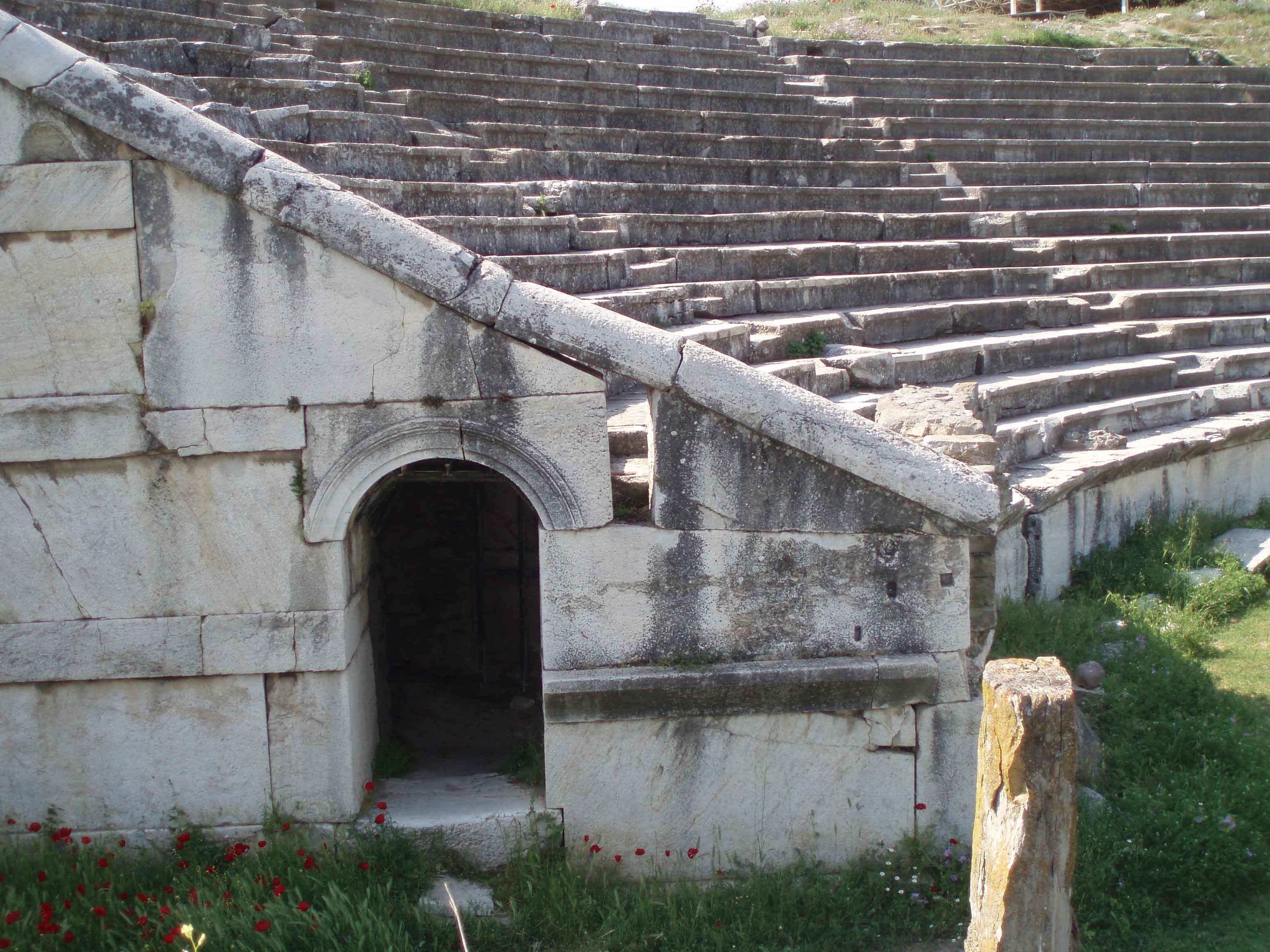
The Theater of Stobi was built at the end of the 2nd or at the beginning of the 3rd century AD. It could accommodate over 7600 spectators. The names of some of them can be seen in the inscriptions in the seats. Originally, the theater in Stobi was built for the performances of plays, mime with pantomime, and musical shows. At the end of the 3rd century, it was converted into an area for gladiator and wild animal shows.

The bodies of the murdered Christians were carried away through the underground corridors, outside the Theater. There, they were taken care of by their relatives and by members of the Christian community, and buried next to the Theater or on the western necropolis outside Stobi.


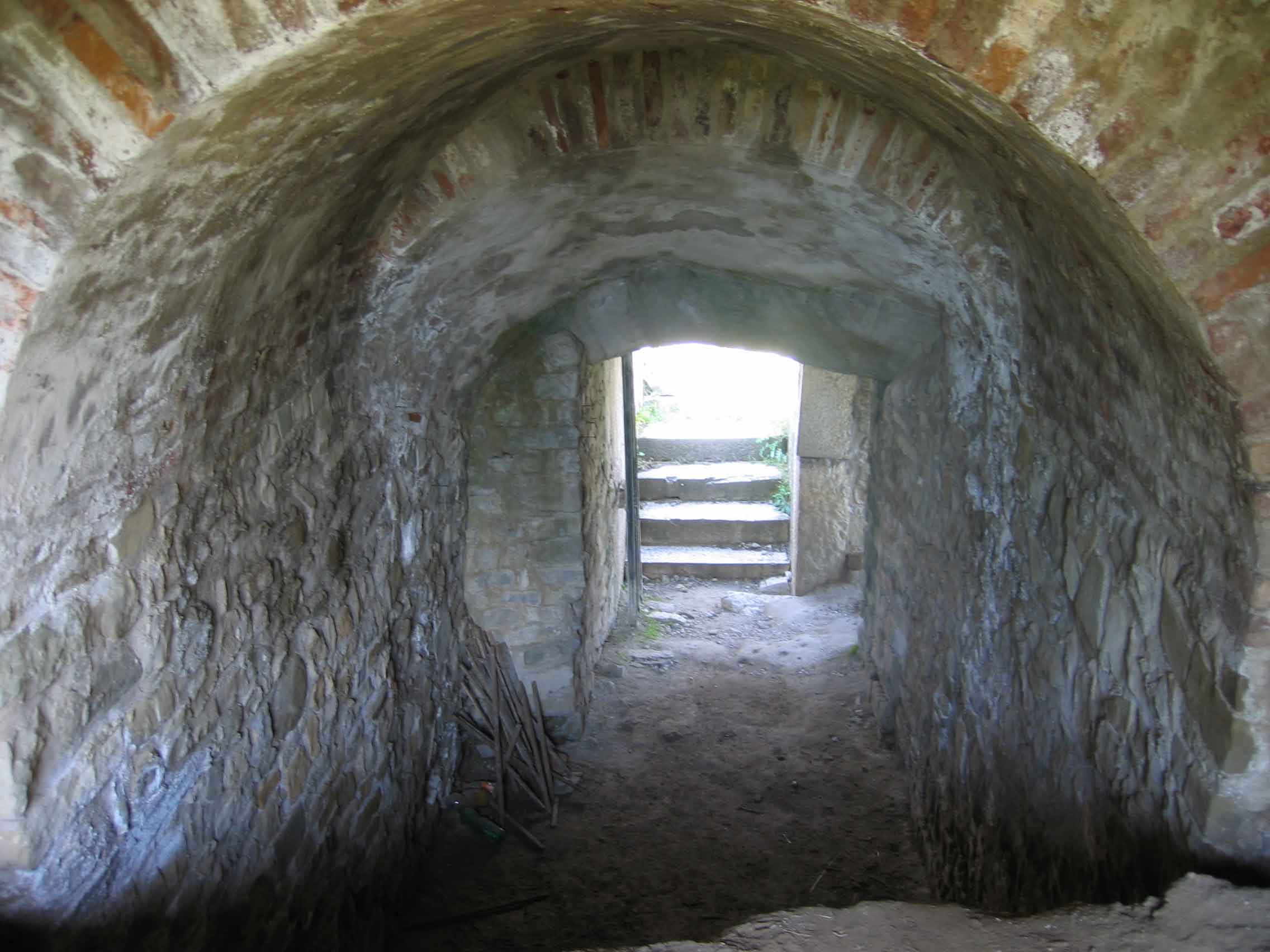

Many Christians must have died here, and likely at least some of the basilicas at Stobi were erected for these martyrs. The Theater was deserted in the end of the 4th century and as a result it was demolished during the following years in order to build other structures.
25-Casino

This structure dates from the 4th to 6th century. It is named Casino after the gambling equipment and dice that were found on a mosaic floor in the guest room.
27-Inner Defense Wall

This Inner Defense Wall was built in the 4th century AD on the remains of some older objects because of the reduction of the city area. Its function ended in the 6th century.
Miscellaneous




In 2008, there used to be a bar/restaurant next to the main entrance of the archeological site Stobi. After you wandered for several hours through the ruins of this ancient city, a cold drink in the shadow is a gift from heaven! Next to the bar was a nice museum shop, where they sold books about Stobi and other archeological sites. You could also buy reproductions of famous archeological artefacts. When we returned in 2012 to have a short stop at this bar on our way from Negotino to Skopje, the bar was almost completely broken down. We heard the construction of the bar was not safe and they had to tear it down. It seems like the ancient ancestors of the local contractor had better construction skills since their buildings survived several centuries! Maybe a new bar will arise here on the foundations of the old one, like they do with churches?